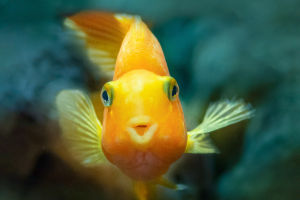In the vast expanses of Patagonia, where the wind whips across the barren plains and rugged landscapes stretch as far as the eye can see, there roams a creature that embodies resilience and adaptability - the guanaco.
Often overshadowed by its more famous relative, the llama, the guanaco holds a special place in the ecosystem of South America's southern region.
The guanaco (Lama guanicoe) is a camelid species native to the arid plains of South America, particularly Argentina, Chile, Bolivia, and Peru. These graceful herbivores are well-adapted to Patagonia's harsh environmental conditions, where they easily navigate rocky terrain and sparse vegetation.
With their slender bodies, long necks, and distinctive camel-like appearance, guanacos are instantly recognizable and have long captivated the imagination of travelers and wildlife enthusiasts.
Despite their meek demeanor, guanacos play a vital role in shaping the ecosystems they inhabit. As primary herbivores, they help regulate plant populations and maintain ecosystem balance. Grazing on grasses, shrubs, and other vegetation, guanacos prevent the overgrowth of plant species and promote biodiversity in their habitats.
Their selective feeding habits also influence plant succession, creating mosaic landscapes of varying vegetation density and structure.
In addition to their ecological significance, guanacos have profound cultural and historical importance to the indigenous peoples of South America. For centuries, these animals have been integral to the livelihoods of indigenous communities, providing food, clothing, and transportation.
The relationship between humans and guanacos is rooted in respect and reciprocity, with traditional hunting practices emphasizing sustainable use and conservation of natural resources.
Despite their resilience, guanacos face numerous threats to survival in the modern world. Habitat loss and fragmentation due to human activities, such as agriculture, urbanization, and infrastructure development, have encroached upon guanaco habitats, limiting their range and access to essential resources.
Illegal hunting and poaching for their prized wool and meat pose significant challenges to guanaco populations, particularly in areas where regulatory enforcement is lacking.
Conservation efforts aimed at protecting guanacos and their habitats are underway in several countries across South America. National parks and protected areas have been established to safeguard critical guanaco habitats and mitigate human-wildlife conflicts.
Conservation organizations collaborate with local communities to promote sustainable land management practices and raise awareness about the importance of preserving guanaco populations for future generations.
Scientific research is crucial in understanding guanaco ecology and behavior and informing conservation strategies and management plans.
Studies on population dynamics, habitat preferences, and genetic diversity contribute valuable insights into the conservation status of guanacos and guide efforts to ensure their long-term survival.
Guanacos are the meek rulers of Patagonia, embodying resilience, adaptability, and grace in the face of formidable challenges. As emblematic species of South America's southern region, guanacos occupy a unique niche in the ecosystem and hold cultural significance for indigenous peoples.
However, concerted conservation efforts are needed to address guanaco populations' threats and ensure their continued presence in the wild. By protecting guanacos and their habitats, we preserve a species and the rich biodiversity and ecological integrity of Patagonia's iconic landscapes.


